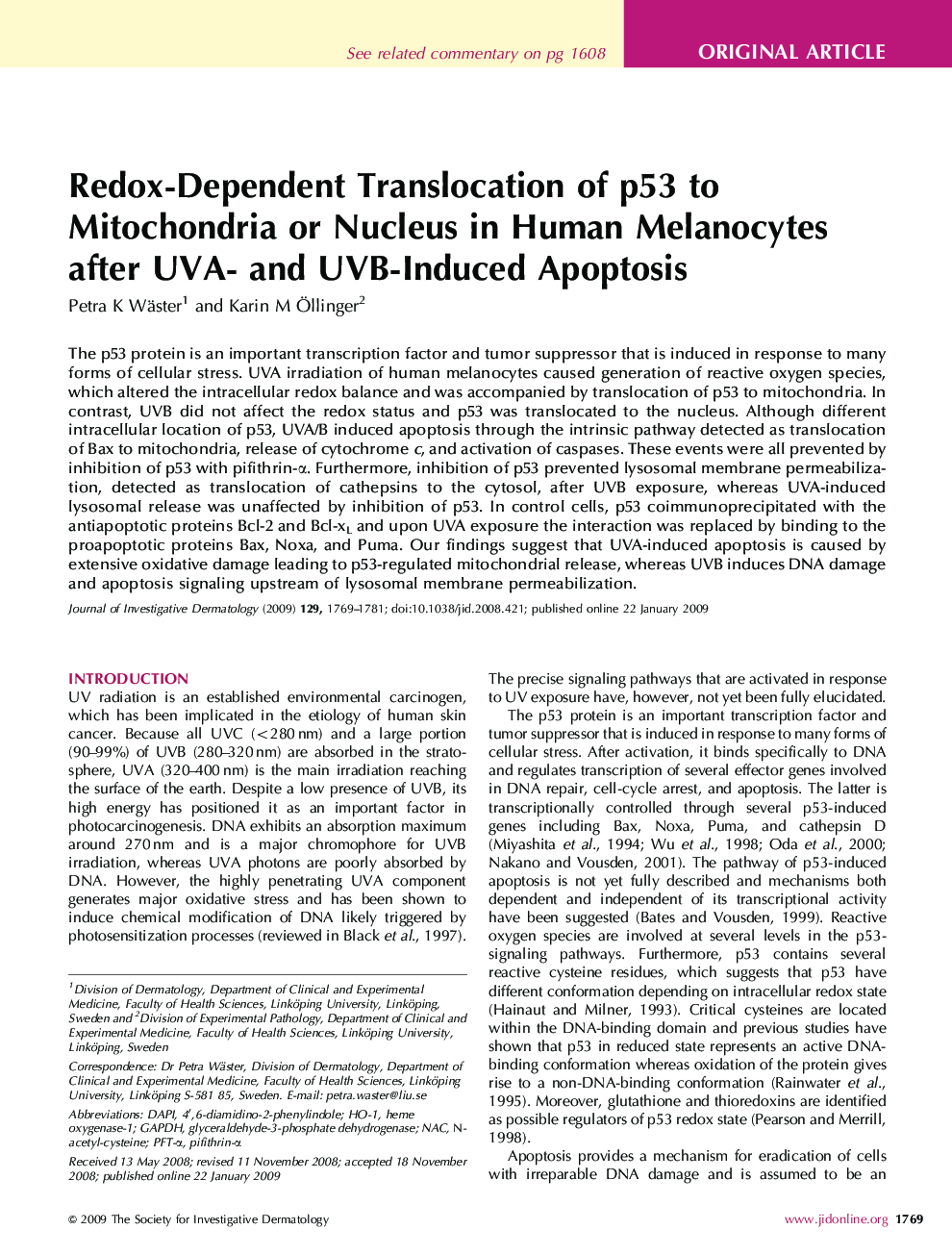| Article ID | Journal | Published Year | Pages | File Type |
|---|---|---|---|---|
| 3217649 | Journal of Investigative Dermatology | 2009 | 13 Pages |
The p53 protein is an important transcription factor and tumor suppressor that is induced in response to many forms of cellular stress. UVA irradiation of human melanocytes caused generation of reactive oxygen species, which altered the intracellular redox balance and was accompanied by translocation of p53 to mitochondria. In contrast, UVB did not affect the redox status and p53 was translocated to the nucleus. Although different intracellular location of p53, UVA/B induced apoptosis through the intrinsic pathway detected as translocation of Bax to mitochondria, release of cytochrome c, and activation of caspases. These events were all prevented by inhibition of p53 with pifithrin-α. Furthermore, inhibition of p53 prevented lysosomal membrane permeabilization, detected as translocation of cathepsins to the cytosol, after UVB exposure, whereas UVA-induced lysosomal release was unaffected by inhibition of p53. In control cells, p53 coimmunoprecipitated with the antiapoptotic proteins Bcl-2 and Bcl-xL and upon UVA exposure the interaction was replaced by binding to the proapoptotic proteins Bax, Noxa, and Puma. Our findings suggest that UVA-induced apoptosis is caused by extensive oxidative damage leading to p53-regulated mitochondrial release, whereas UVB induces DNA damage and apoptosis signaling upstream of lysosomal membrane permeabilization.
